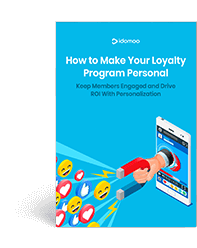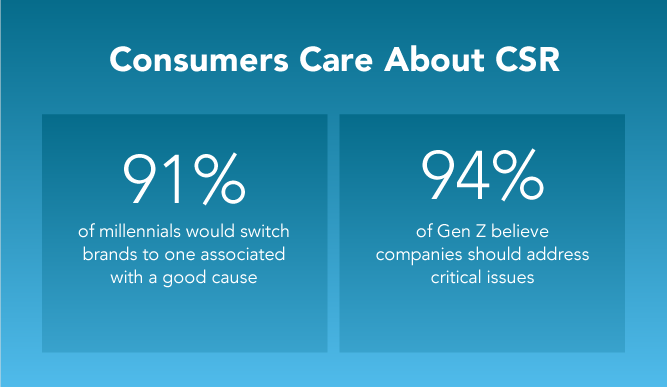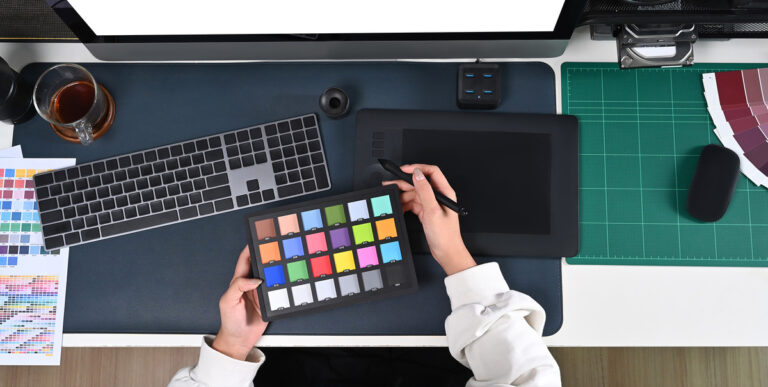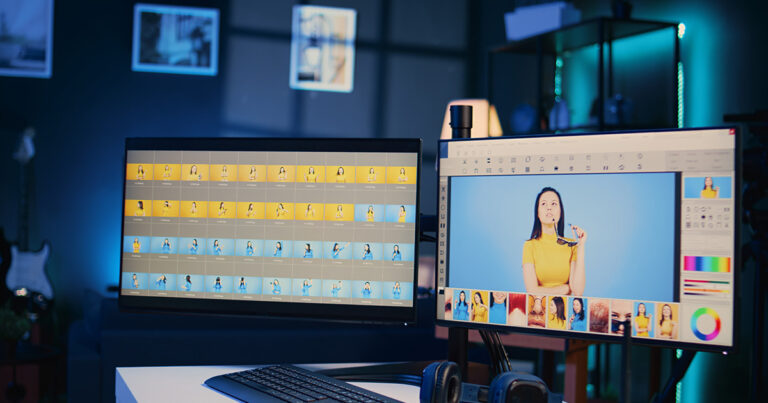Millenials are growing up. Once stereotyped as teens who love to take selfies, this group looks a lot different today. Defined as the generation born from 1981 to 1996, millennials are now entering their late 20s to early 40s — and hold the most buying power of any generation.
So while Gen Z has become an increasingly hot topic, it’s still important enterprises don’t forget about millennials in their marketing efforts. Gen Z may be where consumer trends are heading, but the current economy is in the hands of millennials.
How can businesses successfully win over this generation? It starts with an updated marketing strategy, one that reflects their current buyer behavior — smart with money, savvy with tech and ambitious for their future.
We’ll dig into what today’s millennials are up to, what they care about most and how to create a marketing strategy that they’re sure to resonate with. Read on to get to know this group and to figure out how to market to millennials.
Millennials: Where Are They Now?
Just a decade ago, businesses grappled with how to market to millennial teens: the first generation to grow up alongside a rapid evolution in technology. Millennials were among the last to use landlines — and the first to try out smartphones. They remember the days of the GameCube. They were even among the users of the first big social media platforms, like Myspace and Facebook (now Meta).
And, just as they did years ago, millennials are disrupting the status quo. They’re holding off on buying houses and settling down. Here’s what they now look like.
They’re Holding Off on Major Milestones
As we touched on, millennials are waiting to hit major milestones, unlike baby boomers and other earlier generations. Just take a look at the numbers.
- At age 30, 48% of Gen X and 51% of baby boomers were home-owners — only 42% of millennials at the same age own a home.
- 44% of millennials are married — 61% of boomers were married at a comparable age.
- 64% of baby boomers had children around the ages of 22 to 37, compared to 55% of millennials.
Why the wait? There are several factors. For one, millennials began to enter the working world during the Great Recession. Hit hard by the shake-up in the economy, many millennials today are still recovering.
Well into their working years and trying to catch up to their parents, millennials are being hit hard again — this time by the pandemic. And they don’t have the disposable income their parents did to cushion the blow. Many millennials are lacking pocket change, thanks to student loans. A staggering 63% of this generation carry $10,000 in student debt.
They’ve Paved the Way for a More Diverse America
Gen Z is now the most racially diverse demographic. But long before Gen Z became notorious for its diversity, millennials were considered to be considerably more diverse than past generations. An article from 2014 describes millennials, then young adults, as a demographic pointing the country’s future towards a “majority minority nation.”
They’re Ambitious
Millenials are no strangers to change. Many entered the workforce as the economy took a turn for the worst. They’ve seen the rapid evolution of technology right before their eyes. And, even in the face of an even more disruptive world today, this generation refuses to back down.
They consider themselves workaholics. Specifically, 53% of millennials say they want to get to the top of their career, compared to only 25% of baby boomers. And if that isn’t evident enough of their resiliency, they’re still hopeful they’ll soon reach major milestones — debt or no debt.
They’re not afraid to try out the latest tech, too. Research shows they’re the group most willing to try more advanced types of shopping, like trying on clothes with virtual reality.
They’re Financially-Conscious
Millennials currently have the most purchasing power — and they’re using that money wisely.
Because of student debt, they’re not free to make purchases on a whim. They’re also aware that the economy can quickly downturn. As a result, millennials are one of the most frugal generations. 94% of millennials use coupons and 67% would go to a website to get one — as opposed to only 46% of teens.
They not only differ in how they’re buying things, but what they’re buying, too. A great experience catches the millennial’s eye above everything else. 3 in 4 millennials would rather spend money on a fun experience over something material.
How To Market to Millennials
While Gen Z has the most power in today’s consumer behavior, millennials remain in control of the country’s spending power. They’re also the largest generation in the workforce.
It makes sense, then, that enterprises should continue to pay attention to this generation. To speak their language, try using these marketing strategies.
Speak to Their Love for Social Media
Millennials may be growing up, but their love for social media shows no signs of slowing down. Over 70% of millennials report social media being an essential part of their lives. It’s important that your marketing efforts reflect this.
For instance, make sure your marketing campaigns are shareable, just as Ubisoft did with their global Personalized Video campaign.
Gamers love to brag about their high scores and other accomplishments on social media. Make it easy for players to boast to followers with a personalized highlights reel they can show off to friends and followers.
Don’t know what your customers are looking to share? An interactive video lets your viewers choose their favorite moments straight from the video player.
Focus On Customer Experience
As we spoke about before, millennials would rather pay for a great experience over something physical.
Appeal to their love for memorable experiences, then, with a great CX at every touchpoint. Start from the moment they become a member, as you can see in the spectacular onboarding experience below. There’s even a unicorn.
Greet them by name for a warm welcome. Make sure they have all the resources they need by personalizing the experience. Better still, put it in a video to make it more fun than the traditional onboarding experience.
Or transform your customer service from a point of friction into an experience they’ll remember. Allow them to self-serve in real time with a Personalized Video that gives the specific information they need to know, like Zurich does when it’s time to renew your car insurance.
You can answer your customers’ questions before they even ask. Leverage powerful customer data to determine when and what issues they may run into, letting you send the right message at the perfect time. We’ve seen videos like these increase call deflection by 73%.
Show Your Commitment to Causes
While millennials and Gen Z have their differences, one trend they have in common is their concern for social issues. Both generations have seen the rise of climate change, among other major world events.
With access to the news easier than ever, customers across younger generations are constantly aware of the issues affecting them. And they want the brands they buy from to care, too.
If you want your business to show commitment to a cause, make sure there’s action behind your words. Customers are aware brands can use this as a marketing scheme — and false concern goes directly against their love for authenticity.
Instead, send your customers a message that will actually impact the causes they care about, as National Grid did with the video below.
By giving each customer tips on reducing their carbon footprint relevant to their unique circumstances, viewers could learn how to actually take action and make greener choices.
Revamp Your Marketing for Millenials
Millennials aren’t afraid to try out the latest tech. They’re ambitious, tech-savvy and diverse — a huge difference from the stereotyped, nose-in-their-phone teens they were once labeled as. To wow them, your marketing needs to be slick and your CX seamless.
Immersive and interactive, Personalized Video makes it possible. Speak to every customer on a personal level and dazzle them with brand content so exciting, they want to share it with the world.
Ready to try it out? Let’s talk.







